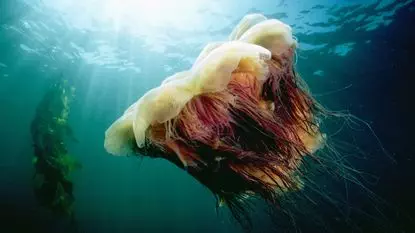These animals are mostly likely to ‘win’ climate change
Some creatures may benefit from the new conditions


While climate change is expected to cause wide-scale extinction, some animals might potentially fare better than others. Some creatures are even reaping benefits from the changing climate and could drastically alter the ecosystem as we know it. These animals are called the “winners” of climate change and will likely thrive in the new conditions. The species most likely to survive or even thrive are those that multiply quickly, are without sensitive habitat requirements and a non-picky diet. Most species that fit the criteria are insects and rodents, and many are considered invasive. Introducing the five species that might win the climate-change race.
Jellyfish
The soft and transparent aquatic creatures could be stronger in a warmer climate. A study done by the Alfred Wegener Institute in Germany analyzed eight species of jellyfish and found that seven of them were capable of expanding their habitats further north towards the North Pole when exposed to rising water temperatures, retreating sea ice and other factors associated with climate change. The lion’s mane jellyfish, in particular, has the potential to triple its population size. “These results clearly show how dramatically climate change could affect the ecosystems of the Arctic Ocean,” Dmitrii Pantiukhin, a doctoral candidate who worked on the study, told Euronews. “The projected expansion of the jellyfish habitats could have tremendous, cascading impacts on the entire food web.”
Bullfrogs


Feral swine
Feral swine, also called wild hogs, are expected to increase in population in warmer temperatures. A study published in the journal Scientific Reports found that feral swine populations rise in warmer temperatures because their food sources increase. The invasive hogs have been found in 35 U.S. states and are extremely destructive, causing more than $1B in damage each year. “Nearly 300 native plant and animal species in the U.S. are in rapid decline because of feral swine, and many of the species are already at risk,” said USA Today. “The swine also carry at least 40 parasites, 30 bacterial and viral illnesses, and can infect humans, livestock and other animals with diseases like brucellosis and tuberculosis.”
Another notorious insect, the mosquito, is likely to grow in population due to climate change. The blood-sucking insects spread several diseases including malaria, Zika and dengue fever and have been known to thrive in warm climates. “Mosquito season is getting longer, mosquito populations are booming and mosquito ranges are growing,” said Gizmodo. The insects can also spread diseases to other species like birds, reducing the infected species’ populations. Longer mosquito seasons can also speed up evolution rates. “More generations means more chances for the world’s deadliest animal to get even better at being the worst,” Gizmodo said.
Leave a Reply